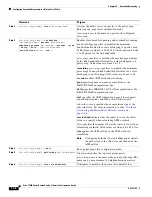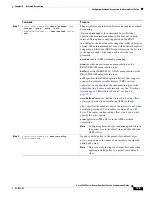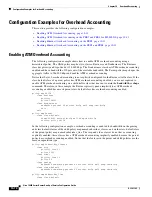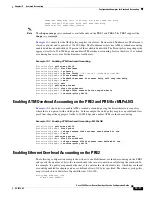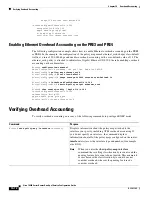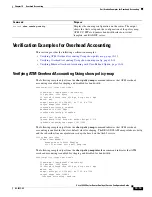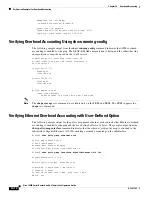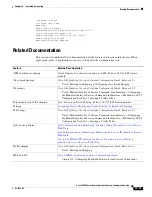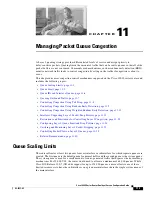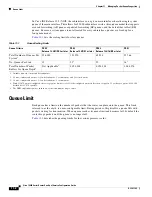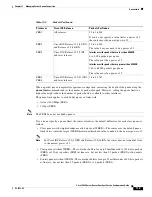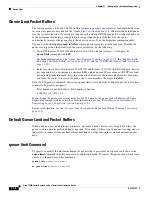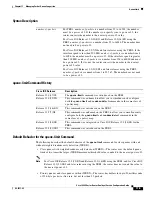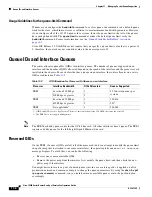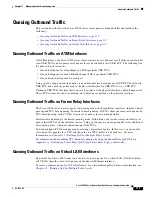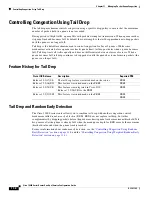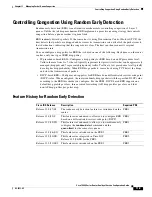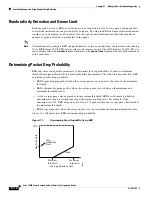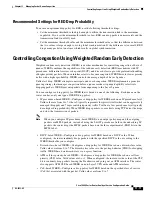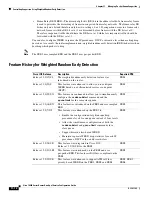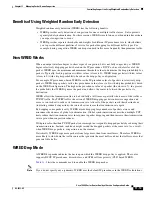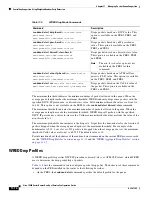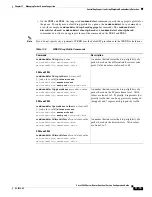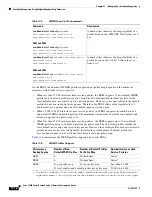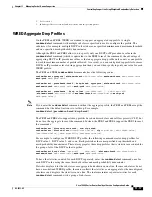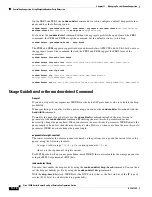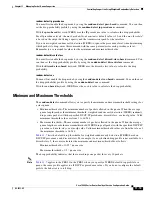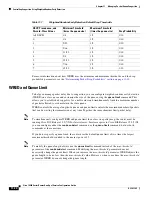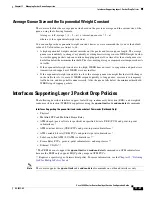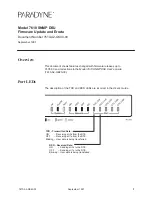
11-6
Cisco 10000 Series Router Quality of Service Configuration Guide
OL-7433-09
Chapter 11 Managing Packet Queue Congestion
Queue IDs and Interface Queues
Usage Guidelines for the queue-limit Command
Whenever you configure the
bandwidth
command for a class queue, the command sets a default queue
limit for the class, which in most cases is sufficient to meet minimum bandwidth guarantees. However,
if you configure all of the 131,070 queues for a system, lower the queue limit so that all of the queues
have enough bandwidth. The
queue-limit
command overrides the default queue limit set by the
bandwidth
command. For more information, see the
“Queue Limit Packet Buffers” section on
page 11-4
.
Cisco IOS Release 12.2(16)BX does not require that you specify a queue limit value that is a power of
2; therefore, the router does not round the value to the nearest power of 2.
Queue IDs and Interface Queues
The router allocates queue IDs (QIDs) to interface queues. The number of queues supported on an
interface and the number of QIDs allocated depend on the speed of the interface and the processor card
installed in the chassis. For each class that has a queue on an interface, the router allocates one or two
QIDs as indicated in
Table 11-3
.
Note
The PRE2 has buddy queues only for the OC-48 line card. All other interfaces have 1 queue. The PRE1
requires a buddy queue for the full-height Gigabit Ethernet line card.
Reserved QIDs
On the PRE2, if no more QIDs are left (all of them are used) and you attempt to modify the queue limit
in a policy map that is attached to one or more interfaces, the operation fails and an
out of resource
message displays. To avoid this, you can do the following:
•
Reserve one or more available QIDs
•
Remove the policy map from the interface first, modify the queue limit, and then attach the new
policy map to the interface
You might desire to reserve a pool of unused queues just in case a service policy is applied on a live
production network and someone attempts to change the queue parameters. By using the
show ha pxf
cpu queue summary
command, you can learn how many available queues are in the pool and plan
accordingly.
Table 11-3
QID Allocation for Classes with Queues on an Interface
Processor
Interface Bandwidth
QIDs Allocated
Queues Supported
PRE1
Less than 500 Mbps
1
32,766 total queues per
system
500 Mbps or greater
2
PRE2
Less than 622 Mbps
1
130,816
622 Mbps or greater
2
254
1
1.
QID 0 and QID 1 are not legal values. Therefore, instead of supporting 256 QIDs, the router supports 254.
PRE3
Not applicable
2
2.
The PRE3 does not support buddy queues.
1
256,000

